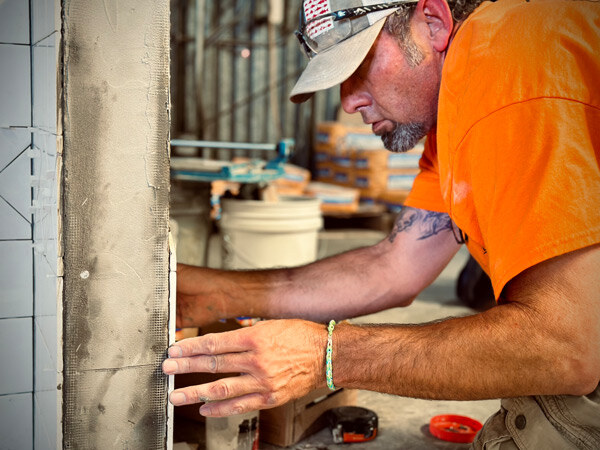Qualified Labor

The Metric for Qualified Labor
Determining an accurate measurement requires using the best measurement device. The ceramic tile installation industry identifies the following hierarchy to establish what is "correct".
-
Local Code
-
Manufacturer Recommendations
-
Tile Industry Documents
Industry documents focused on installation techniques are the methods in the TCNA Handbook and the ANSI A108.02-4.3 standards for Workmanship, Cutting, Fitting, and Grout Joint Size.
These documents are used in disputes to establish what a correctly executed ceramic tile installation is.
CTEF uses these installation references as guidance for education and certification.
The Certification Tests
The CTI and ACT Tests have two separate aspects:
-
Written Test
-
Hands-On Test
>> See Grading the Toughest 25 Square Feet of Tile You'll Ever Install (Video)



The Need for Tile Installer Certification
Aside from the United States Department of Labor-recognized training programs, available through both union and non-union organizations, the industry does not have a mechanism to indicate who is and is not capable of installing tile. Consumers must rely solely on references and testimonials to determine which contractor to use for their project.
These certification tests are recognized by the tile industry as a reliable indicator of knowledge and skills.
CTIs and ACTs are the "Qualified Labor" for installation found in MasterSpec & BSD SpecLink.
To meet the accreditation requirements of the NTCA Five-Star Contractor program, residential companies must have 30% of their labor force certified, and commercial companies must have 10%.
General Contractors, Construction Managers, and Builders must ensure they follow the specifications for using Qualified Labor when it is indicated for their project.
The Benefit of Qualified Labor
Additional Qualified Labor Resources
For additional resources relating to Qualified Labor, explore the following links:
>> Need Tile Setters? Focus On Qualified Labor
